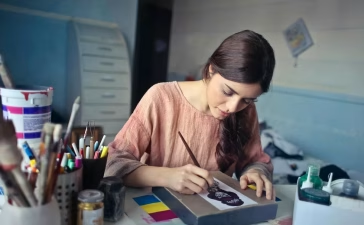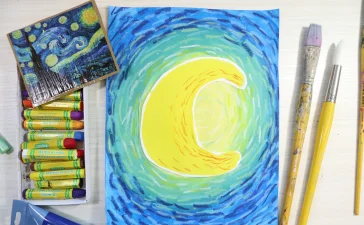Line art, often referred to as line drawing, is one of the most fundamental forms of artistic expression. At its core, line art strips art down to its purest form—lines used masterfully to convey form, texture, and movement. But what exactly is line art, and why is it such an important technique for artists and creators, from beginners to professionals?
This blog deep-dives into the world of line art. Whether you’re an art enthusiast, an aspiring digital creator, or a complete beginner looking to learn the essentials, we’ll explore what line art is, how it’s created, and the variety of techniques artists use to bring their vision to life.
Understanding What Line Art Is
Line art is defined as artwork composed exclusively of lines, with no involvement of gradients, shading, or color hues. It primarily relies on simple yet impactful lines to represent objects and concepts. This simplicity keeps the focus on the structure and composition of the piece itself.
Unlike full-color paintings or intricate sketches, line art utilizes positive and negative space to create depth and clarity while allowing for unique interpretations. Line art can be found in a variety of mediums, such as:
- Ink on paper drawings
- Digital creations using graphic tablets
- Etchings, engravings, or block prints
Line art isn’t just limited to stark black-and-white drawings. Variations of intensity, thickness, and the overall energy of the lines result in vast diversity—allowing artists to evoke emotions, tell stories, or present abstract ideas.
Why Line Art Matters
Line art is not bound by realism, making it accessible to artists of all levels. It enhances creativity as it forces the artist to think critically about the shapes and structures they’re creating. For beginners, line art becomes a gateway to understanding the art of observation and how lines interact to form the basis of visual representation. At the professional level, line art often serves as a minimalist approach to portray grand ideas and concepts.
It is also incredibly versatile, being incorporated into:
- Architectural designs
- Logos and branding
- Digital illustrations
- Tattoos and body art
- Fashion illustrations
This wide-ranging usage makes mastering the use of line drawing techniques essential for anyone exploring creative paths.

Line Drawing Techniques To Explore
Perfecting line art means understanding and practicing various line techniques. These form the building blocks of structure, dynamics, and texture in line art.
Contour Drawing
Contour drawing emphasizes the outline of shapes within an artwork. By focusing on the edges and boundaries of objects, this method gives a clear, defined structure to the forms in your art. Blind contour drawing, where the artist draws the outline of the subject without looking at their paper, is a popular exercise to boost observation skills.
Hatching and Cross-Hatching
These techniques use closely spaced lines to create texture and depth. Hatching involves drawing parallel lines, whereas cross-hatching incorporates intersecting lines to achieve a more layered effect. Both methods are ideal for mimicking light and shadows in line art.
Gesture Drawing
Gesture drawing captures the dynamic motion of a subject. Often used in figure studies, this technique uses quick, fluid lines to represent movement and flow. It’s a fantastic way to loosen up your drawing style and bring life to your creations.
Stippling
Stippling relies on the placement of small dots to create form and shading. While highly time-consuming, it can yield impressive results. The density of the dots determines the levels of light and shadow.
Thick and Thin Lines
Playing with the width of lines adds character and variation to your work. Thick lines can signify boldness and dominance, while thin lines often convey delicacy and intricacy.
Broken Lines
Instead of creating continuous lines, broken line techniques use gaps to add a sense of incompletion or borderless expansion. This can create a unique mood or energy within the art.
Incorporating Line Techniques in Digital Art
Thanks to modern tools, line art extends beyond traditional pen-and-paper approaches. Digital art platforms like Adobe Illustrator, Procreate, and Clip Studio Paint are perfect for experimenting with line techniques. Digital creators can:
- Use customizable brushes to change line textures
- Incorporate layers for intricate compositions
- Use symmetry tools for precise and appealing geometric designs
Mastering line art digitally can also open doors to professional opportunities, such as working on illustrations for books, creating branding materials, or entering the world of animation.
Tips for Beginners Starting With Line Art
Starting with line art can feel intimidating, but practicing simple techniques can significantly speed up your learning curve. Keep these tips in mind as you explore:
- Stick to the Basics – Begin with simple shapes and forms before moving on to intricate designs.
- Use References – Observe how objects are structured in reality or use photos to practice.
- Experiment – Try different line techniques to see what works best for your style.
- Be Patient – Line art thrives on precision and practice. Allow yourself the time to improve.
- Start Digitally If Appropriate – Digital platforms provide flexibility and tools like undo, which can be helpful for beginners.
Line Art’s Role in Creative Expression
Ultimately, line art is a fascinating and creative art form that holds its own among diverse mediums. Its simplicity can be deceptive; a single line can convey more than a thousand colors. The variety of line techniques in art offers endless possibilities for artists to refine and build their craft.
Whether you’re drawn to the delicate intricacy of stippling or the bold strokes of gesture drawing, the world of line art is full of opportunities to hone your skills and find your unique style.
Find Your Style Through Line Art
Discovering what you can achieve with line art is an exciting adventure. By understanding different techniques and practicing them consistently, you can unlock a wide range of creative possibilities regardless of your level of expertise.
Remember, every great artist once started with a simple line. It’s where all creative journeys begin. Pick up your pen, tablet, or stylus, and start exploring the unending potential of line art today.






